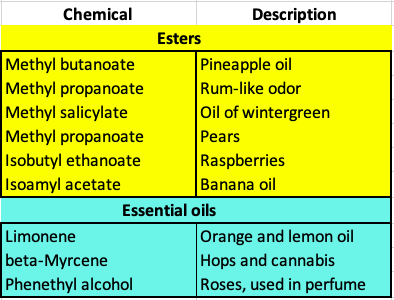Just because we're still in the throes of a global COVID pandemic doesn't mean that other critical public health issues should be ignored. No sir, nothing gets by us. So, let's put aside delta for a while and focus on "dealt it," as in "he who smelt it..."
Before we get started ... who amongst us hasn't been at the dinner table during a time of gastrointestinal turmoil and been faced with the following decision regarding the expulsion of gas:
- Do I hold it in?
-or-
- Do I just let it rip and hope no one notices or the blame falls elsewhere?
There are both up-and downsides to each option. So it is only fitting that ACSH, a pro-science organization by any measure, examines these choices.
1. Hold it in
While holding it in may be the course of action preferred by those schooled in proper etiquette, it can have its downside. Profound duodenal discomfort can result, which can derail any attempt to enjoy a meal.

Felix, having held it in, experiences severe bloating and dyspepsia. He will not be partaking in a second helping of tripe. Image: PxHere
2. Letting it rip
Although there are few pleasures in life more exquisite than blasting out a real ass flapper, it can be profoundly embarrassing if you're caught. Additionally, it is not always possible to accurately gauge the volume or pressure of accumulated gas, especially if you forget simple thermodynamic principles, namely the virial equation of state, which is simply stated below...

The virial equation of state. Easy peasy. Credit: YouTube
Back to the dinner table...Felix was unaware of the virial equation of state and chose option #1, resulting in unforeseen and disturbing consequences:

Felix's ignorance of simple thermodynamic principles leaves him in an untenable situation. But at least he didn't have to eat more tripe. Image credits: MaxiPixel, Public Domain Pictures, Wikipedia Commons, BePrepared.com
Another option - The SBD
Sometimes you just know that it's going to be a quiet one – let's called this sphincter muscle memory – which, perhaps, you can safely expel without bringing the wrath of your fellow diners crashing down upon you. It is here where the composition of the "silent but deadly (SBD)" flatus comes into play.

Chemistry of fart gases
I feel that it is important to justify this idiotic article by showing some chemistry, which also enables me to defend my sizable meager salary. Here are some chemical tidbits. You may be surprised at some of them.
- More than 99% of fart gases do not smell. These include hydrogen, methane, carbon dioxide, and nitrogen.
- Of the four gases above, two (methane and hydrogen) are flammable, and the other two (carbon dioxide, nitrogen) are fire extinguishers.
- Mind-bending question: For professional fart lighters, this delicate balance is critical. How will they know whether what they emit will extinguish the match or whether it will result in a splendid rectal pyrotechnics exhibition? As TV (further) devolves, it is hard to imagine that "Real Fart Lighters of New Jersey" isn't already on Andy Cohen's drawing board.

Photo: Wikimedia Commons
Sulfur stinks
It is the minor components of fart gas that you don't want to be stuck in an elevator with. These contain sulfur, mostly the vile dimethyl sulfide (which, in low concentrations, is also responsible for the smell of the ocean), hydrogen sulfide (disgusting and toxic), and methanethiol (even worse than disgusting). These gases are formed by the digestion of sulfur-rich food, such as garlic, onions, and broccoli, or by bacterial fermentation in the large intestine of indigestible foods.
What else is in there may surprise you
If you conduct even a brief search of the literature, you will be astounded by the sheer volume of research done on this subject. Some of this research pertains to minor components in fart gas. In fact, a 2007 paper in the journal FASEB identified 297 (!) volatile organic compounds (VOC) found in feces, any one of which could also be expelled as a gas, albeit in minuscule quantities and theoretically be detected by a nearby nose. It is unlikely that you want to learn about all 297 doodie chemicals, so I have selected some of the most interesting (and surprising) examples – ones that smell good!
And, if you ask an organic chemist what chemicals smell good, most will say a class of compounds called esters. Esters give fruit its flavor and scent, so imagine my surprise when I found that 46 different esters could be found in feces, perhaps giving the term "tutti frutti" a new meaning.
Esters were, unexpectedly, the most numerous class of compounds found in the cohort and longitudinal studies. There have been few reports of esters associated with stool, which of course, does not possess the typical pleasant smell of esters. In the cohort study, 46 different esters were identified. [Emphasis added]
C.S.J. Probert, et. al., FASEB, February 2007 https://doi.org/10.1096/fj.06-6927com
The table below shows some of the pleasant-smelling, low molecular weight esters and essential oils detected. You'd think that the men's room at Grand Central Station, possibly the most disgusting place in the galaxy, would smell like a fruit stand.

Why would anyone want to measure 297 chemicals in feces?
The study I cited is actually pretty clever and potentially useful. The authors found a distinctive pattern of esters (and their chemical components alcohols and carboxylic acids) in the feces of people who had certain intestinal diseases, especially C. difficile infection or ulcerative colitis when compared to those with healthy intestines. So the study is really an attempt to diagnose GI disease using a technology called SPME GCMS (solid-phase microextraction followed by gas chromatography-mass spectrometry) to analyze VOC in stool specimens.
So, no - no matter how fine your breeding, your farts won't smell like the produce section at Stop and Shop, but at least this gave me an excuse to toot out a few laughs.




